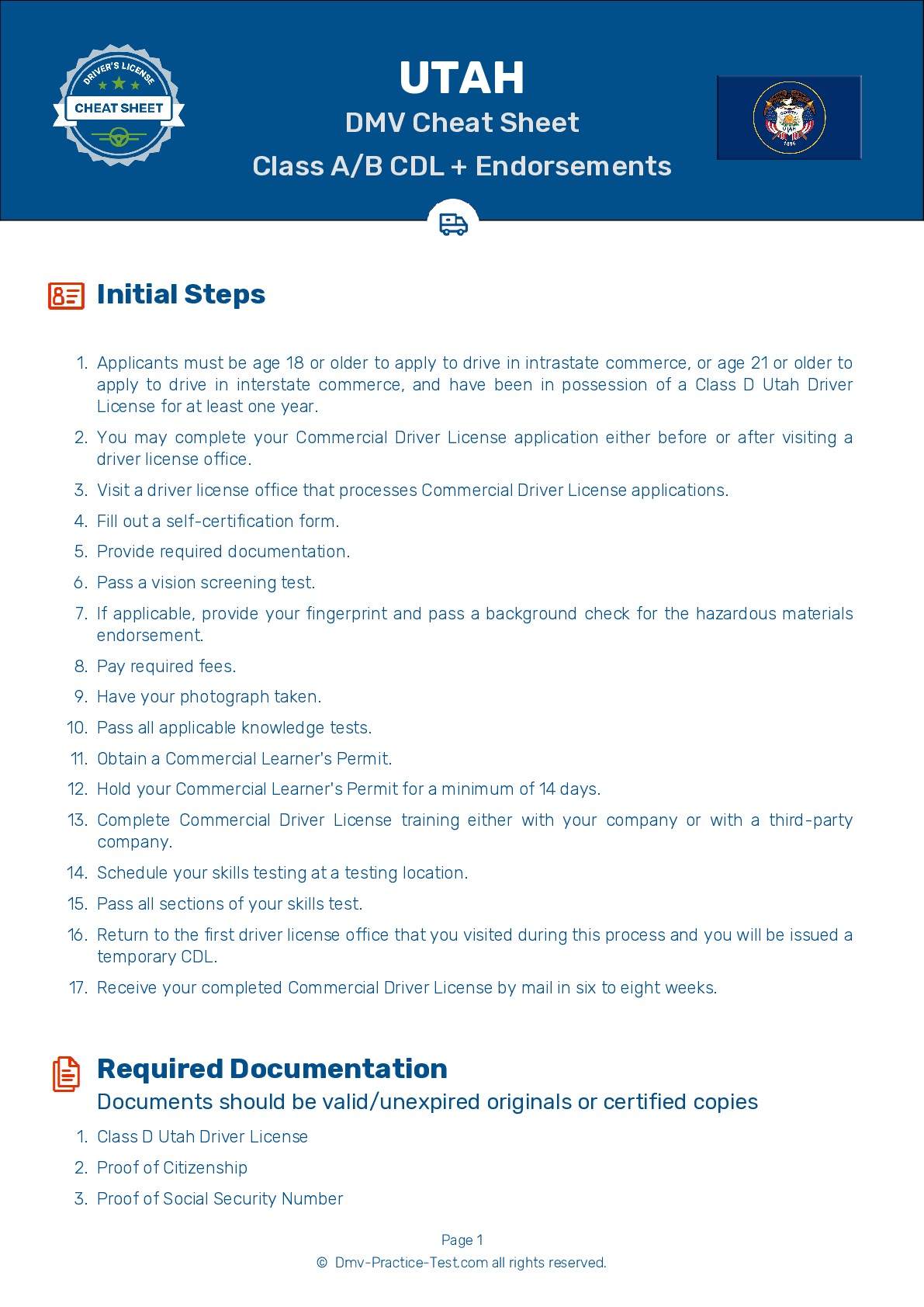Tank Endorsement Test | Utah 2025 #1 Page 2 of 3
Train for FREE with our Utah tank endorsement practice test online. The official exam test consists of several obligatory parts, with all of them checking your knowledge of different blocks of road rules. If you need to obtain a UT tank license in 2025, practice as much as possible. Free sample tests published on our website will help you check and improve your knowledge and boost your grades. Please bear in mind that DMV requirements for issuing a CDL tank vehicle endorsement may vary from state to state.
8 . When stopping a manual transmission vehicle, what should you do when the engine is close to idle?
When stopping a vehicle with a manual transmission, you should push in the clutch when the engine is close to idle.
9 . At least eight red reflective triangles must be carried within a commercial motor vehicle.
All commercial motor vehicles are required to be equipped with the proper emergency equipment. This may include spare electrical fuses; three red reflective triangles, six fuses, or three liquid burning flares; and at least one properly charged and rated fire extinguisher.
10 . The person resonsible for a vehicle's safe operation is the shipper.
The driver is responsible for safely operating their vehicle and delivering their cargo without delay.
11 . Rough acceleration:
Always accelerate smoothly and gradually so that your vehicle does not jerk. Rough acceleration can cause mechanical damage.
12 . When switching gears, what happens if you remain in neutral for too long?
Remaining in neutral for too long when shifting gears may make it difficult to put the vehicle into the next gear.
13 . The minimum tread depth of all major grooves on tires that are not on the front of a CMV should be a minimum of:
When inspecting your tires, verify that there is at least 4/32 of an inch of tread depth in every major groove on the front tires, and tread depth of at least 2/32 of an inch on the other tires. Tires on the same vehicle should all be the same size.
14 . Which of the following is not required safety equipment?
All commercial motor vehicles are required to be equipped with the proper emergency equipment. This may include spare electrical fuses; three red reflective triangles, six fuses, or three liquid burning flares; and at least one properly charged and rated fire extinguisher.
See the exact questions that will be on the 2025 Utah DMV exam.
99.2% of people who use the cheat sheet pass the FIRST TIME
Lillian MCcranie explains how our CDL study guide was helpful in passing the exam and recommends it to everyone.
Cameron tells us how he purchased the CDL exam, and found it to be a useful tool which helped him pass the exam and find a job.



